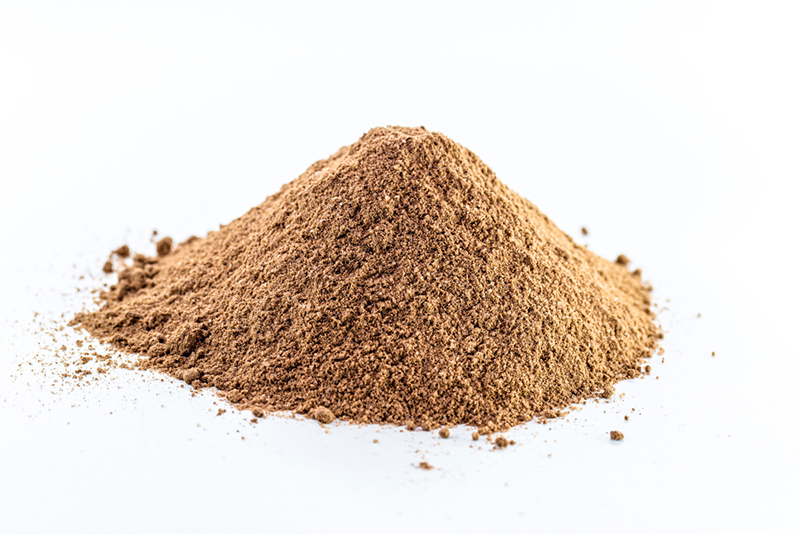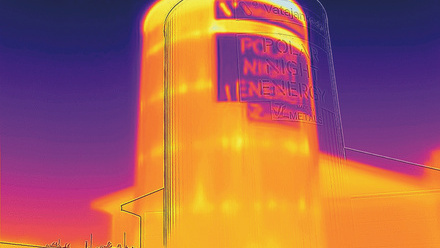Coated cerium oxide nanoparticles
A patent for coated cerium oxide nanoparticles with antibacterial, antifungal and antiviral properties.

Cerium oxide, often used in polishing
© RHJPhtotos / ShutterstockNanoparticles of certain metal oxides are known to have useful antibacterial, antiviral, antifungal or oxidative properties. For example, the photocatalytic behaviour of titanium dioxide (TiO₂) is harnessed to oxidise pollutants, kill microorganisms and produce self-cleaning glass.
Cerium oxide (CeO₂ or Ce₂O₃) nanoparticles (also known as nanoceria) have also been found variously to exhibit oxidative, antioxidative, antimicrobial and catalytic activities that have useful technological applications.
However, nanoparticles such as nanoceria can also aggregate and therefore typically require coatings to enhance dispersibility. For instance, cerium oxide nanoparticles have previously been covered with polymers, such as polyacrylic acid, polyvinylpyrrolidone or dextran, or with sodium sulfosuccinate esters. Unfortunately, such coatings can interfere with the particles’ desirable properties.
Toray Industries was granted European patent EP3901096 in March 2025 that claims protection for coated cerium oxide nanoparticles exhibiting improvements in nucleic acid, polypeptide and dye decomposition rates; improved oxidase and catalase activity; as well antifungal and antiviral properties
The cerium oxide nanoparticles claimed in the patent have a surface covered with a vinyl polymer or a polyamide, each having a heterocyclic amine skeleton formed of any one of piperazine, pyridine, imidazole or carbazole.
The patent also claims protection for methods of decomposing a nucleic acid or a polypeptide using the nanoparticles; a method of manufacture; and an oxidising agent, antioxidant, antifungal agent and antivirus agent comprising the cerium oxide nanoparticles.
Experimental examples illustrating the beneficial properties of the coated cerium oxide nanoparticles are included in the patent.
In one example, particles are exposed to pUC19 plasmids (small, circular, extrachromosomal DNA molecules found in bacteria) in solution, and the rate of nucleic acid decomposition is measured by monitoring pUC19 cleavage.
All nanoparticles coated with polyamides or vinyl polymers, according to the claimed invention, are found to cleave pUC19 with nucleic acid decomposition rates between 39.4% and 82.2%. In contrast, cleavage is not observed for cerium oxide coated with polyacrylic acid.
In another example, polypeptide decomposition is tested by exposing the particles to ovalbumin (the main protein found in egg white). Again, cerium nanoparticles coated with a polyamide are found to decompose the ovalbumin with a rate of 82.7%, whereas only minimal decomposition is observed for nanoparticles coated with polyacrylic acid.
In a test of antifungal properties, a barrier formed from the coated nanoparticles on an agar medium is found to block growth of Trichoderma mould.
Moreover, to test antiviral properties, a sample of cerium oxide nanoparticles coated with polyamide are exposed to feline calicivirus (a substitute for norovirus) and the infectivity titre is measured. The sample, according to the invention, exhibits a 4.0% logarithmic reduction in infectivity titre, corresponding to a 99.99% antivirus activity. The corresponding logarithmic reduction for a sample coated with polyacrylic acid is -0.5%.
According to the patent, the cerium oxide nanoparticles have a central nucleus formed of a mixture of Ce₂O₃ and CeO₂, and an exterior surface covered with the polymer coating. The ratio of Ce4+/Ce3+ for the nucleus is measured by X-ray photoelectron spectroscopy and found to vary between 1.24-4.00 for the experimental examples.
The energy states of cerium (III) and cerium (IV) are also observed by measuring the X-ray absorption fine structure (XAFS) spectrum. Cerium oxide nanoparticles prepared according to the claimed invention are found to exhibit maximum absorptions in the Ce L3 edge X-ray absorption near edge structure (XANES), which differs from those found in cerium oxide nanoparticles prepared with a coating of polyacrylic acid, as well as from those found in non-nanoparticle cerium oxide crystals, or in cerium salts such as cerium (III) carbonate, cerium (III) nitrate and cerium (IV) ammonium nitrate.
In the claimed manufacturing method, the coated cerium oxide nanoparticles are prepared by mixing a solution of the relevant polymer with a solution including a cerium (III) ion or with a cerium (III) salt to obtain a mixed solution and then adding an oxidising agent.
In the experimental examples, the nanoparticles are prepared using aqueous solutions of the desired polymer and of cerium (III) nitrate hexahydrate, with hydrogen peroxide as the oxidising agent. Coated nanoparticles are removed from solution using a 30kD ultrafiltration membrane.
The patent describes many different possible uses, ranging from additives in textiles for masks, medical caps or shoe covers, bedding and furniture, to filters (such as for air conditioners, vacuum cleaners or vehicles), in construction materials, and even mosquito nets.






